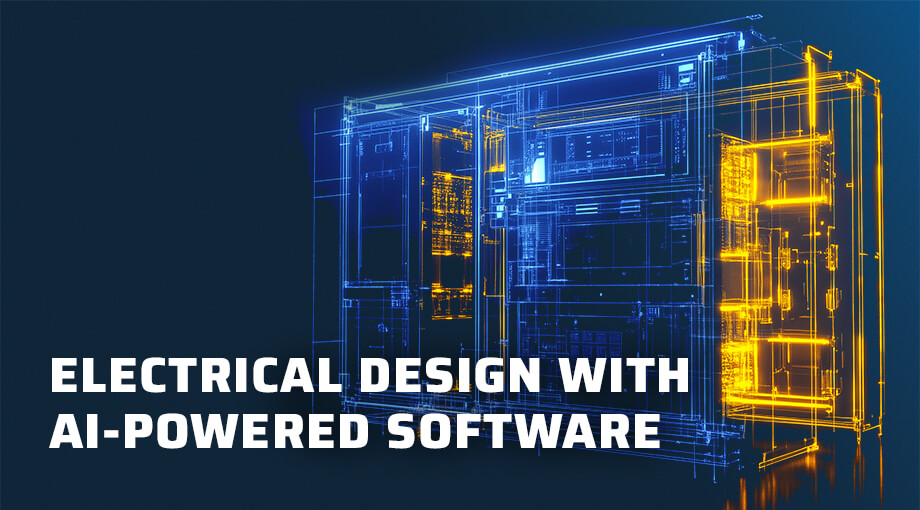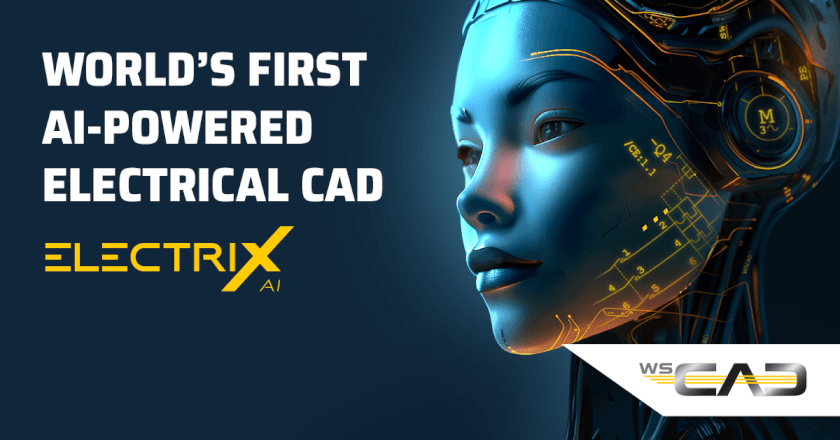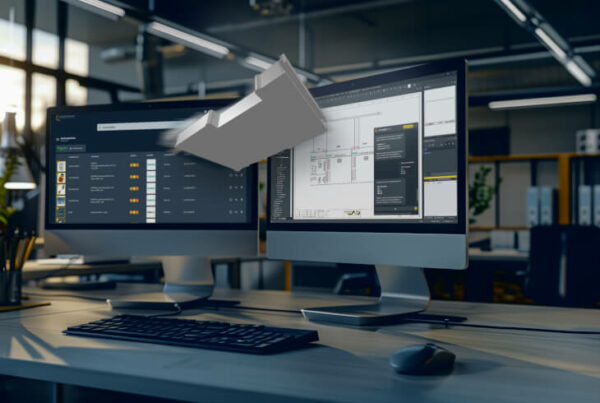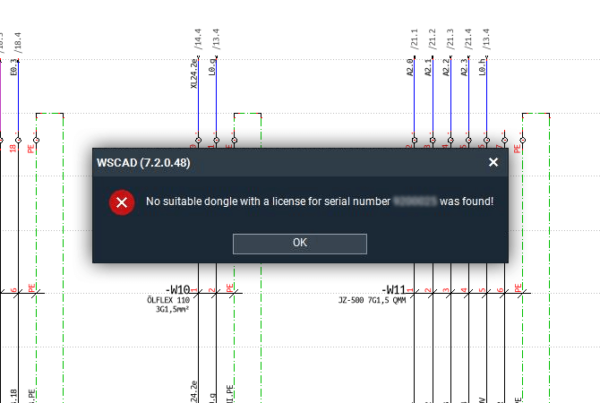
The electrical design world is evolving at lightning speed, and artificial intelligence (AI) is becoming a game-changer in the industry. If you’re an electrical designer or managing a team of engineers, you might have heard about AI but aren’t sure what it means for you. It’s time to get excited. AI is not some far-off concept – it’s already transforming the way electrical design is done, promising to improve efficiency, reduce costs, and ease the growing pressure of workforce shortages. In this post, we’ll explore the top five ways AI is set to impact the future of electrical design. We will showcase real-world examples from the world’s first AI software for electrical engineering, giving you a clear sense of why adopting this technology is crucial for staying competitive.
1. Boosting Productivity and Slashing Design Time
One of the most significant ways AI will change electrical design is by drastically increasing productivity. AI-powered tools can automate time-consuming tasks, such as providing the correct technical information, error-checking your projects, or generating the BOM or terminal list. For example, generating a bill of materials (BOM) with a traditional electrical CAD software will take 22 clicks and about 80 seconds to complete. This of course only if you know exactly where to click. And casual users – those engineers who are using the software only 2-4 hours per week – usually don’t know the whereabouts of each button on the screen. With an AI-powered software, all it takes is a simple command like “Create the BOM” and it’s done in 3-4 seconds.
All the electrical design tasks that we have measured show AI related performance boosters (time savings) of at least 90%. Imagine a complete design process that takes 30 hours to complete manually. With AI, you could slash engineering time on specific tasks and therefore still save at least 50% of the overall design time.
AI supercharges productivity, allowing companies to meet growing demands more efficiently. But this productivity boost isn’t just about saving time; it’s about enabling electrical designers to focus on more critical, high-value tasks that require human insight and creativity. Novices can quickly ramp up their productivity, while seasoned professionals can redirect their time toward more complex projects. For design managers, it means meeting tighter deadlines without compromising on quality.
2. Cutting Costs and Saving Time
Time is money, and AI can save you both. By reducing the time it takes to complete routine tasks, AI can help companies reduce project costs significantly. For example, design errors that might go unnoticed for weeks can now be caught by AI algorithms.
A simple command like “Find the errors in my project” is all it takes for your AI-Copilot to scan the schematics in seconds and find costly mistakes. It identifies open connections, missing assignments, or misplaced components, making manual error-checking a thing of the past. This capability alone can prevent budget overruns caused by rework, which is often the result of human error. This kind of proactive problem-solving is embedded in ELECTRIX AI – the latest electrical design software from WSCAD.
Additionally, AI’s speed allows for more iterations in the design process. Faster iterations mean you can refine and optimize your designs more effectively, ensuring the final product is the best possible version before it even reaches the production phase. In short, AI helps companies save money not just by working faster, but by working smarter.
3. Bridging the Skilled Worker Gap
The electrical design industry, like many others, is grappling with a shortage of skilled workers. AI-powered software like WSCAD’s ELECTRIX AI offers a way to bridge that gap by empowering less experienced engineers to take on tasks that would have previously required expert-level knowledge. AI Copilot offers intuitive guidance, making the learning curve for new engineers significantly less steep. A command like “Generate the cable list, the terminal chart, the cover sheet and the BOM” is done in 15 seconds without any clicks and without knowing what functionality is needed and in what menus or sub-menus it is hidden. This is a major breakthrough for companies struggling to find skilled workers.
But AI technology doesn’t just help junior engineers – it also eases the workload for seasoned professionals. Instead of spending their valuable time on repetitive tasks like finding the project where they last used a specific part, experienced engineers can just ask AI Copilot: “Where have I used ventilator 3239.100?” Within seconds AI Copilot will answer providing the right project.
For managers, the use of AI means getting more out of your team, regardless of their experience level. We can now onboard new talent more quickly, while experienced designers can focus their expertise where it’s needed most – on complex, high-value projects. AI helps companies stay competitive, even in a tight labor market, by optimizing their existing workforce.
4. Reducing Stress and Mental Fatigue
Electrical design can be incredibly stressful, with engineers juggling tight deadlines, complex projects, and the pressure to avoid costly mistakes. AI tools act as an extra set of eyes, catching errors and significantly reducing the mental load on designers.
Take, for example, the process of placing macros on a page. Go the folder with your macro library, search for the right macro and then drag and drop it to your schematics. To place four macros on your page you’d have to do that process four times and – if you are fast – it will probably take you at least five minutes. Or you could instruct your AI Copilot to place the macros A, B, C and D on the page. Sit back and watch the AI Copilot do the work – in 15 seconds it’s done.
Imagine being able to offload mundane or repetitive tasks – such as creating schematics or generating reports – to an AI assistant. And you can do that today. This level of AI-powered automation not only speeds up workflows but also gives engineers more breathing room to think creatively and tackle bigger challenges, ultimately leading to a more satisfying and less stressful work experience. For managers, this means happier, more engaged employees, which directly contributes to lower turnover and higher productivity.
5. The cost for AI
As of today, WSCAD is the only vendor in the market offering AI-powered electrical design software. In WSCAD’s ELECTRIX AI all innovative AI-features come at no additional cost and are included within their electrical CAD software, making advanced AI technology accessible to all users, from small businesses to large corporations. Something to consider if you want to take advantage of cutting-edge technology without the financial burden.
Conclusion: Act Now
AI is no longer just a futuristic idea – it’s already transforming the way electrical design is done today. Tools like WSCAD’s ELECTRIX AI are proof that the future is here, and it’s time to embrace it. Whether you’re looking to increase productivity, cut costs, fill the skilled labor gap, or reduce stress, AI offers a clear path forward.
By adopting AI in your electrical design processes, you’re not just staying competitive – you’re positioning your team for success in an increasingly complex and fast-paced industry. The possibilities are endless, and those who embrace AI will be at the forefront of this exciting new era in electrical design. Can you really afford to be stuck with old tools that no longer give you a significant competitive advantage? Can you afford to wait until your competitor boosts their productivity with AI-powered tools? We suggest act now and reap all the benefits!
Register now for the free demo version of ELECTRIX AI!
Use ELECTRIX AI and make sure you win the race for the top positions in electrical design. Be among the first users to take the decisive leap with state-of-the-art technology! ELECTRIX AI will be available soon. Register now for the free demo download.



